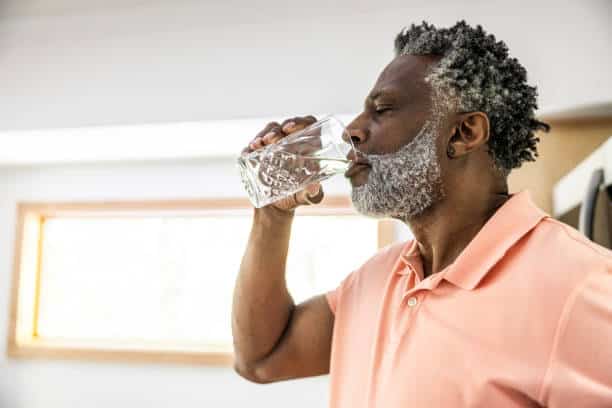
Swelling, or edema, is more than just a nuisance—it can feel like carrying extra baggage in your legs, ankles, or abdomen.
For those living with ATTR-CM (transthyretin amyloid cardiomyopathy), a rare condition where abnormal protein deposits disrupt heart function, swelling is often a daily struggle. You know the sensation: puffy ankles after standing too long, a tight abdomen that makes clothes feel snug, or legs that seem to weigh a ton. It’s frustrating, exhausting, and sometimes even disheartening.
But here’s the thing: managing swelling has come a long way.
Gone are the days when edema meant endless discomfort or reliance on heavy medications. Today, natural remedies—rooted in science and practical for everyday life—can make a real difference.
Whether you’re navigating ATTR-CM or just dealing with occasional puffiness, these six strategies—leg elevation, compression stockings, sodium reduction, diuretic foods, gentle exercise, and counterintuitive hydration hacks—are proven to work.
Let’s dive into how they can help you feel lighter, healthier, and more in control, with real-world tips and evidence to back it up.
1. Leg Elevation
Picture this: you’re lounging on the couch, feet propped up on a stack of pillows, and suddenly your legs feel less like lead. That’s the magic of leg elevation, one of the simplest yet most effective ways to combat swelling.
For ATTR-CM patients, fluid often pools in the lower extremities because the heart struggles to pump efficiently. Elevating your legs uses gravity to guide that fluid back toward your heart, easing the pressure.
Doing it is easy. Lie down and raise your legs so your feet are above heart level—think 12–18 inches of elevation. Use pillows or a folded blanket for comfort, and aim for 15–30 minutes, two to three times daily. Research from the Journal of Cardiology shows that consistent leg elevation can reduce ankle swelling by up to 50 percent in heart-related conditions.
For ATTR-CM, this not only reduces puffiness but also lightens the heart’s workload, which is a win-win.
You can even make it fun. Elevate your legs during a podcast session or while scrolling through your phone. Keep your knees slightly bent to avoid strain, and consider a recliner for easy elevation. It’s a small habit with big rewards, and your legs will definitely feel the difference.
RELATED: 5 Treatment Options For ATTR-CM
2. Compression Stockings
Compression stockings might sound like something your great-aunt wore, but they’re a modern marvel for managing edema. These snug, stretchy garments apply graduated pressure—tightest at the ankles, looser up the leg—to boost blood flow and prevent fluid buildup.
Because ATTR-CM patients have compromised circulation, compression stockings are like a gentle massage that keeps things moving.
Available in strengths like 15–20 mmHg for mild edema or 20–30 mmHg for more severe cases, they’re easy to find online or at pharmacies. Studies find that daily use of compression stockings reduces leg volume by 10 to 20 percent in patients with chronic swelling. Better yet, today’s designs come in sleek patterns and colors—no more ugly eyesores!
Ready to try them out? Slip them on first thing in the morning, before swelling starts, and wear them during active hours. Pair with leg elevation for maximum impact. If you’re worried about comfort, start with knee-high stockings and consult your doctor for the right fit.
3. Sodium Reduction
Sodium is the silent saboteur of swelling. In ATTR-CM patients, too much salt can worsen fluid retention, putting extra strain on an already overworked heart. Cutting back doesn’t mean bland meals—it’s about smart swaps and a little creativity in the kitchen.
The American Heart Association suggests keeping sodium at 2,300 mg daily, but for ATTR-CM, aiming for 1,500 mg or less is ideal. That means ditching processed foods like canned soups, deli meats, and frozen dinners, which can pack 700 mg of sodium per serving.
Instead, flavor your food with herbs like rosemary or spices like turmeric. Studies show low-sodium diets can reduce fluid retention by up to 30 percent in heart-related conditions, easing both swelling and heart strain.
Start small: check labels, cook at home more often, and try a sprinkle of lemon zest on your veggies. Dining out? Ask for no added salt. It’s not about perfection but about consistent, doable changes that help you feel lighter. Your heart—and your ankles—will thank you.

4. Diuretic Foods
Your kitchen is a treasure trove of edema-fighting allies. Certain foods act as natural diuretics, helping your body flush out excess fluid without the side effects of prescription meds. Best part, these foods are a safe, delicious way to manage swelling while boosting nutrition.
Top choices include cucumbers, celery, watermelon, and parsley. Cucumbers are 95 percent water and rich in anti-inflammatory compounds, while parsley has been shown to reduce fluid retention in small clinical trials. Watermelon, with its high potassium content, helps balance sodium levels, and celery promotes urination naturally.
According to the Nutrition Journal, diets rich in these foods reduce leg swelling markedly in heart patients.
So, incorporate them daily. Toss cucumber slices into a salad, snack on watermelon, or add parsley to soups. Feeling adventurous? Blend celery, cucumber, and a splash of lime for a refreshing, anti-swelling smoothie. Just make sure to check with your doctor first, as some diuretic foods may interact with ATTR-CM medications.
It’s like nature’s pharmacy at your fingertips!
RELATED: 12 Foods That Reduce Swelling & Joint Pain
5. Gentle Exercise
Exercise when your legs feel swollen?
It sounds like a tall order, but gentle movement is a proven way to reduce edema. For ATTR-CM patients, low-impact activities like walking, swimming, or chair yoga improve circulation, reduce fluid buildup, and lift energy levels without hurting the heart.
Research shows that just 20–30 minutes of moderate exercise most days reduces leg swelling by up to 25 percent in chronic conditions. Walking activates the calf muscles, acting like a pump to move fluid upward.
If mobility is limited, try ankle pumps—flexing and pointing your toes while seated—for a low-effort option.
You can even join a program like the American Heart Association’s “Move More” for structured ideas, or try a local walking group for socializing. Start with 10-minute sessions and build up gradually. Consistency beats intensity here, and you’ll feel both lighter and stronger over time.

6. Hydration Hacks
Believe it or not, drinking more water can actually reduce swelling.
When you’re dehydrated, your body holds onto fluid, worsening edema. Fortunately, proper hydration keeps things balanced, preventing the body from clinging to excess water.
Aim for eight to 10 cups of water daily, and sip steadily throughout the day.
Hydrating foods like watermelon or cucumber also count toward your goal. Research from the journal Heart & Lung finds that adequate hydration can reduce fluid retention by 15–20 percent in some patients. If water feels boring, try herbal teas or a splash of fruit juice for flavor. Smart water bottles that track intake can make it fun and easy, as well.
Just remember: ATTR-CM patients with severe heart failure may need fluid restrictions, so always check with your doctor first.
Overall, swelling and ATTR-CM can feel isolating, but you’re not alone. Community support networks, like those from the Amyloidosis Foundation or online forums, connect you with others who understand. Sharing tips—like the best compression stockings or low-sodium recipes—can spark new ideas and motivation, too.
So take control.
Swelling doesn’t have to run your life. With leg elevation, compression stockings, sodium reduction, diuretic foods, gentle exercise, and hydration hacks, you have six powerful, natural tools to fight back. Start small, lean on your community, and embrace these strategies to feel lighter and more empowered.
You can make swelling a thing of the past!









